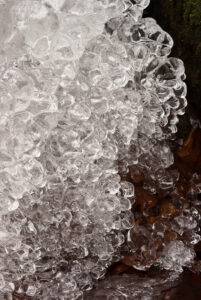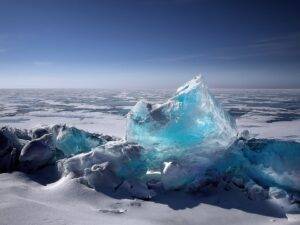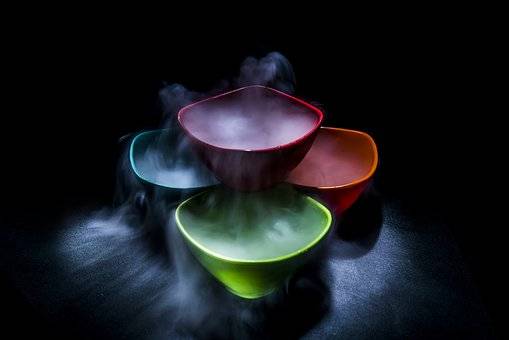All of us have seen ice cubes floating in water because of differences in their level of density. Here ice is on the lesser side than water in terms of density. However, Christopher Salzmann from the University College of London and his team were having their Friday afternoon moment. They were open to new inventions and did come up with amorphous ice induced by a simple ball milling technology.

The amorphous ice molecular dynamics are similar or equal to that of water in the glass. On plopping this ice in a glass full of water, you will see the same moving around without sinking or floating.
The recent discovery
The amorphous ice structure does not have a neat pattern, and the water molecules within the same are not arranged in an organized way. So far, the world is already accustomed to various other amorphous ice types, but the latest one is at par with the rest.
Technique used
As already discussed, scientists did use a regular technique known as ball milling to generate the same. Here, the technique does include shaking balls made of stainless steel (cooled at 200 degrees celsius) and ice cubes in a container.
Further, they went on with an X-Ray, analyzed the components of the latest findings, and went on to discover the existence of amorphous ice. Computer graphics did reveal that the ball milling effect upon ice did produce an unorganized structure. Here the layers of ice got to pass each other in random directions because of the external forces from the balls.
The team behind the discovery did suggest that this latest ice is specifically in the glass state of water. They also did come up with the theory that there is a long way to go for scientists to make the particular fit within the dual liquid state of water. However, there are many controversies, and the entire human civilization is keen to discover relevant findings.
Types and properties of amorphous ice
So far, the world was accustomed to two different amorphous ice forms, and they are:
Low density amorphous ice:
Low-density amorphous ice came to human knowledge back in 1936. Let’s proceed with some of the interesting facts about LDA:
- LDA also comprises amorphous solid water (ASW), hyper-quenched glassy water (HGW), LDA-I, and LDA-II.
- The preparations of LDA are not equal to one another.
- You will obtain LDA-I by heating HDA over isobaric conditions using ambient pressure. And LDA-II comes from the isothermic depressing of VHDA.
- In an LDA structure, you will find tetrahedral water molecules bonded over hydrogen using four of the nearest neighbors along with clathrate cages.
- 100 to 1000 sec at a range of 130k is the dielectric relaxation span of LDA.
- LDA ice is, to some extent, quite coherent but not crystalline.
High density amorphous ice
High density amorphous ice came into existence in 1984. Here is a list of exclusive features of the same:
- HDA is more stable on the thermal attributes.
- To make HDA ice, scientists release pressure on Ice seven (which is formed from liquid water having 3+GPa. Now, the temperature of the same is brought down to ambient temperatures). Moving on, there is a transition between HDA-LDA, following the crystalization of the LDAinto hexagonal and cubic ice.
- HDAs do differ from each other based on the type of technology that underwent preparation.
1.17g is the regular density of HDA. - HDA formation is an after-effect of the initiation in kinetically arrested or pressurized transformations.
- The conversion of HDA into VHDA requires a second type of water molecule bonded over hydrogen. And both need to be in 0.32nm.
- HDA is stable in relation to LDA under the presence of polyol solutes having molecular weight on the lesser side, 1,3-propanediol, ethylene glycol, 1,2-propanediol, xylitol, glycerol, and D-sorbitol.
Very high density amorphous ice:
The Very High density of amorphous ice came into existence in 2001. Moving on, let’s have a look into its special properties:
- The preparation of VHDA involves the submission of HDA ice into the isobaric heating schedule at 1.15GPa.
- By isobaric annealing, the HDA between 0.3 GPa and 1.9GPa scientists and researchers got VHDA at 0.8 GPa. There was a change in density at higher pressure under the influence of elastic compression.
- With a rise in the annealing temperature and pressure of VHDA, the chances of thermal stability against crystalization increase.
Transitions in VHDA are irreversible. - VHDA is considered more stable than HDA because the former comes into existence through the phenomena of structural relaxation of HDA.
- Also, the chemical potential is less in VHDA in comparison to HDA.
- The structure part in VHDA is more evolved than LDA and HDA.
- The transformation journey from LDA to VHDA takes place in two steps: a discontinued transition between LDA – HDA. Second, there is a continuous evolution in the structure of the HDA, which after multiple reconfigurations, gives rise to VHDA.
Interesting facts about ice

Here are multiple interesting facts about ice:
- You will find sea ice and land ice on Earth. While land ice is made of fresh water, sea ice is made of salt water.
Ice covers 10% of the land surface and 7% of the ocean surface on Earth. - The ice layer at Antarctica’s bottom is a million years old.
- Snow makes glaciers and ice caps grow.
- Ice is known by various names, like frazil, brash, pancake ice, and nilas.
- Use of ice to preserve food dates back a long ago.
- The world has faced more than one ice age.
- The presence of Oxygen and Hydrogen does pave the way for the existence of ice on other planets than Earth.
- Enceladus is a moon of the planet Saturn, where you will find “cryovolcanoes” at its southernmost pole. Here instead of magma, scientists have noticed an eruption of ice.
- Glaciers do help scientists with the restoration of facts from the past.
Interesting facts about dry ice

Here are multiple dry ice facts that will interest you:
- Dry ice is not made up of water.
- Dry ice uses include, it replacing the special freezers during power outages.
- People use dry ice for cleaning, which is convenient for various surfaces.
- Dry ice can cause frostbite or skin damage on exposure to bare skin for a prolonged duration.
- People handling dry ice can suffer from hypercapnia (an increase in CO2 levels in the blood). The tasks include turning dry ice into gas or melting the same.
The latest finding does open many roads to new experiments and results alike. And that way, in the upcoming years, one can expect to learn a lot about the properties of water and have their queries satiated in the best way possible.



